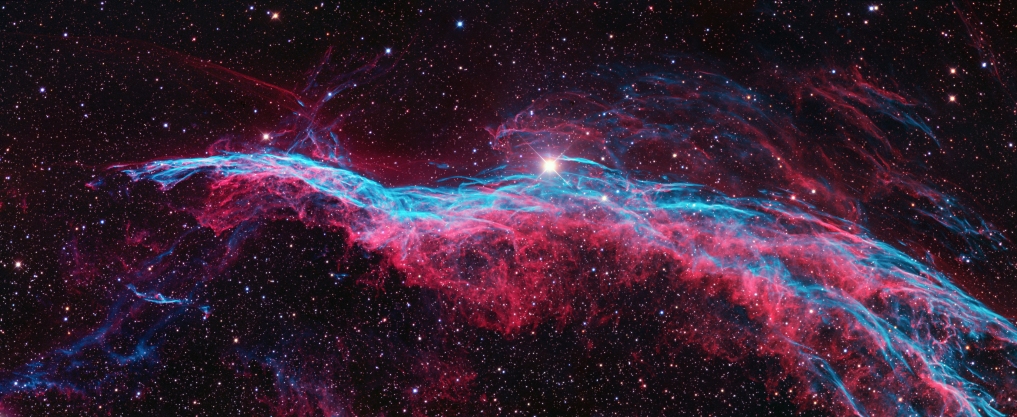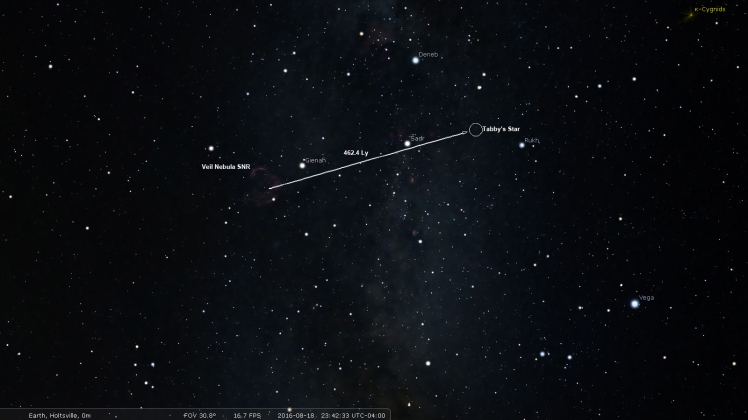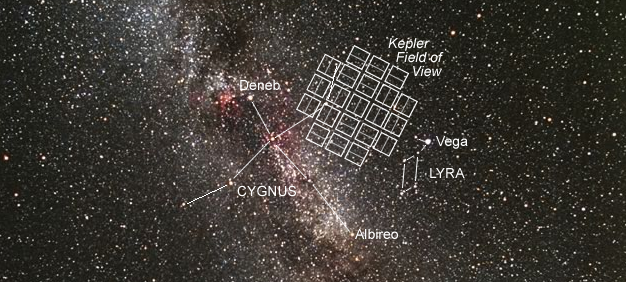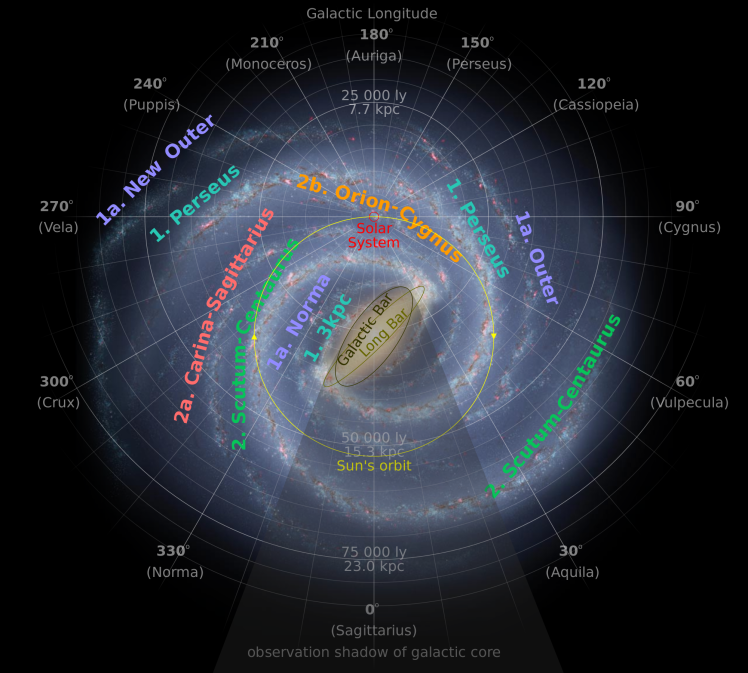
KIC-8462852, otherwise known as “Tabby’s Star”, in recognition of Dr. Tabetha Boyajian, the lead author of the September 2015 study Where’s the Flux?, the first such paper publicizing the star and investigating its highly unusual light curve, has come under new study. Not only has a consensus on what’s causing the star’s peculiar light curve NOT been reached, its gotten “weirder”, to borrow a term used by some to describe its behavior.
I had written an introductory article on this enigmatic star back in November of last year entitled “Science Fact or Fiction: The Peculiar Case of KIC-8462852“. Since then, there’s not much to report, except that a contentious exchange ensued between two teams regarding the star’s apparent long-term dimming and a new, as yet to be published study submitted on the 3rd of this month by Benjamin T. Montet and Joshua D. Simon, again without anything significant to report as to the underlying cause of the peculiar fluctuations in brightness.
Although not discussed in this latest paper by Montet and Simon, the Alien Mega-Structure hypothesis survives and is still being floated by some as a possibility along with everything else initially discussed in my first article. It is truly sad to see that this idea has survived as long as it has, especially by those who should know better. Without belaboring the point and adding to the discussion of same in my first article, the big problem with the Alien Mega-Structure hypothesis is that the star does NOT present with the enormous heat signature such an artificial structure would produce, to say nothing of the energy necessary to mine and harvest the raw materials and resources to produce the object and what of the source of those raw materials? Given the density of Silicon (2.33), the basic raw material used in solar PV technology and assuming for the moment the alien Dyson Sphere was produced using some variant of this, the mass of a one-meter-thick shell with a 1 AU radius surrounding the star would be 8.5 E+26 Kg. The mass of Jupiter is 1.9 E+27 Kg. Assuming the shell has a density of 3 (the average density of the Earth is 5.5), you would need the entire mass of the planet Jupiter to produce the shell, an enterprise where a serious cost-benefit analysis would be required!
I’ve just watched Dr. Boyajian’s TED talk and what I find remarkable is how many have lost sight of the big picture and the simplicity of nature. Its quite easy to do having instant access to today’s technology, the instant communication along with observing platforms such as Kepler and Hubble, getting lost and immersed in the data and research, lost in the minutiae, we sometimes lose sight of the big picture. Its been my experience that going outside on a clear, dark night and looking up at the majesty of the night sky tends to clear the mind and does a good job of maintaining a centered perspective. Dr. Boyajian, there is nothing odd or peculiar about the star, nothing at all; you see, its not about the star, its about the star’s environment.
These observations and studies of KIC-8462852 bring to mind Occam’s Razor, that everything else being equal, the simplest explanation tends to be the correct one. Nature is simple but she can be a vexing creature, she can be elusive, confounding and often mysterious and perplexing, as someone who is loath to give up their secrets, secrets often hiding in plain sight; we just have to know where and how to look for them. This is one of the keys to understanding her, knowing what questions to ask and where and how to look for the answers.
Tabby’s star
Tabby’s star is an F3V main sequence star. The “F” designation is the star’s spectral class, “3” indicates its on the hot side of F class stars (0 – 9 is the range with 9 the coolest within class). By comparison, our sun is a G2V main sequence star, the G classification a bit cooler than F class. From the hottest to the coolest, the basic Morgan-Keenan Spectral Classification system is O, B, A, F, G, K, M. The “V” designation is the Luminosity class and, in this case, indicates the star is a Main Sequence star, a star that is producing energy via hydrogen fusion reactions in its core and is in hydrostatic equilibrium, a state where outward gas pressure (produced by the 15+ M K temperatures of the star’s core) is balanced by gravity.
Most stars visible in the sky are Main Sequence stars. Main sequence stars tend to be stable; stability is their hallmark – you don’t get to be a Main Sequence star if you’re unstable and Tabby’s star is no exception. In the several papers published since Dr. Boyajian’s original paper and including that paper, there has been some discussion of, not just what appears to be abrupt, temporal and, in some cases, precipitous drops in the flux (light) from the star, but of a continuous, steady and decades-to-centuries-long decline in the stellar flux. The light curve presented in the 3rd August paper by Montet and Simon is an integrated light curve of Kepler Full Frame Images [FFI] containing the temporal (short time scale) Kepler data and what is referred to as “long cadence” data (see the author’s Notes and Commentary at the foot of this article). These observations are inconsistent with the output of a Main Sequence star; the star isn’t changing, its environment is.
From Section 5.1 (page 8) of the 3rd August paper by Montet and Simon
It is clear from this excerpt that the measured flux from the star, its brightness, has been steadily waning over time scales measured not in decades but in centuries. These observations just speak to the apparent brightness of the star, not its intrinsic output, something that cannot appreciably change over these time scales without the star fundamentally changing and there is no known mechanism for a main sequence star to change such as KIC 8462852 has been observed to change. So, I say again, its not about the star, its about its environment.
Veil Nebula Supernova Remnant


Now that we’ve established that there is nothing odd or peculiar about the star and that its the star’s environment that is affecting the observed flux, we can now focus on what the cause is. To do that, we have to take a step back and, perhaps, go outside on one of these clear, dry August evenings and look directly overhead to the constellation Cygnus, the celestial swan, as that’s where Tabby’s star is located.
You may have initially wondered why I chose a recent HST image of the south-western section of the famous Veil Nebula supernova remnant as the lead image for this article. Initial distance estimates to the nebula placed it at about 1,470 light years with a shell radius of 50 light years, placing the location of the progenitor star at a distance of 1,520 light years. Initial estimates of the remnant’s age placed it between 3,000 – 6,000 years. Recent observations with the Hubble Space Telescope have refined those estimates with an event age closer to 8,000 years and a distance of 2,150 light years including a 50 light-year radius from the progenitor’s location to the remnant’s shell boundary. These latest observations place the Veil Nebula supernova progenitor’s location at 780 light years from Tabby’s star, a distance too far to have any physical effect on the star’s environs.
Edwin Hubble and the Scale of the Universe
In the years leading up to the publication of Edwin Hubble’s 1929 watershed discovery that the Milky Way is one of billions of galaxies flung across time and space, there was much debate as to the core metric of the discovery, the determination of an object’s distance according to its red-shifted radial velocity. Indeed, in a now famous 1920 debate, the great astronomer Harlow Shapley debated Heber Curtis, arguing that the great spiral nebula, Messier-31 in Andromeda, was part of the Milky Way galaxy; Curtis argued the opposing view. Today, we now know that Curtis’ view would prevail.
In order to accurately determine the core aspect of Hubble’s discovery, it was necessary to determine interstellar reddening, that is how much of a source’s (star’s) flux is “reddened” (attenuated) due to interstellar gas and dust. Today, we have accurate metrics on that value but that wasn’t always the case.
Tabby’s Star Subject to Interstellar Reddening

Although the Veil Nebula supernova would have no direct physical effect on Tabby’s star’s environs, its location is significant in that it illustrates that the star is located in a more central, turbulent, gas-and-dust rich region of the Milky Way’s Orion-Cygnus arm, an outer region of which that also contains our solar system! It was a supernova that occurred five billion years ago in what is today our region of the Orion-Cygnus arm that is thought to have initiated a flurry of star formation, an event that would lead to the formation of our star, the sun and our solar system. The heavy elements that led to the evolution of life on our planet were forged in the now-dead nuclear cauldron of that star. The integrated light curve of KIC-8462852 above, illustrating the steady, long-term decline in the star’s light curve, is consistent with a protracted ingress of higher density gas and dust of the Interstellar Medium (ISM) along our line of sight with the star. It can be stated differently, that the star’s decreasing light curve is being “reddened” by the steadily increasing density of the intervening ISM. The short, temporal fluctuations in the star’s brightness are consistent with the transit of smaller, varying density pockets of gas, dust and debris along our line of sight. The galaxy is a really big place and the odds are quite high that something will come between us and the star, especially since the star resides in a richer, higher-density region of the galaxy than we do. Eventually, Tabby’s star may be completely hidden from view, only visible by Infrared observations.
The next time you decide to go for a swim at the beach or have a barbeque or picnic and are wondering when the sky will clear and the sun will “come out from behind the clouds”, think of Tabby’s star and expand your horizons a bit.

Notes
KIC is an acronym for Kepler Input Catalog
The Kepler data are comprised primarily of short (1 minute) and and long (30 minute) cadence light curves
Author’s commentary: in what could only be described as an adventure in “lets make this stuff up as we go” and what would otherwise be a routine study of a nondescript, rather ordinary star in central Cygnus, has turned into a ridiculous, media-hyped story, complete with absurd claims of alien mega-structures, comet swarms and colliding planets, not to mention the waste of valuable telescope time at SETI. Towards what end? The universe is rife with unbelievably awesome, “cool” things to observe and study without inventing new ones. There is no shortage of such things and its high time we learn to recognize nonsense when we see it.
All our science, measured against reality, is primitive and childlike-and yet it is the most precious thing we have ![]()
An index of all articles in this blog can be found here

Wow. I’m so glad you were able to solve the mystery! Now we can all stopping working on it. Thank you sir!
LikeLiked by 1 person
You’re most welcome!
LikeLike
I really hope this is correct!
LikeLike
Rest assured, I’m pretty certain its correct.
LikeLike
Great, a testable hypothesis.
How much reddening does a 20% dust attenuation correspond to, and what is the measured value for Boyajian’s Star?
By the way, if we ever do communicate with a Dyson Sphere civilization, one of our techs that we can trade for their planet-dismantling capabilities is a way of making solar panes that aren’t a meter thick.
LikeLike